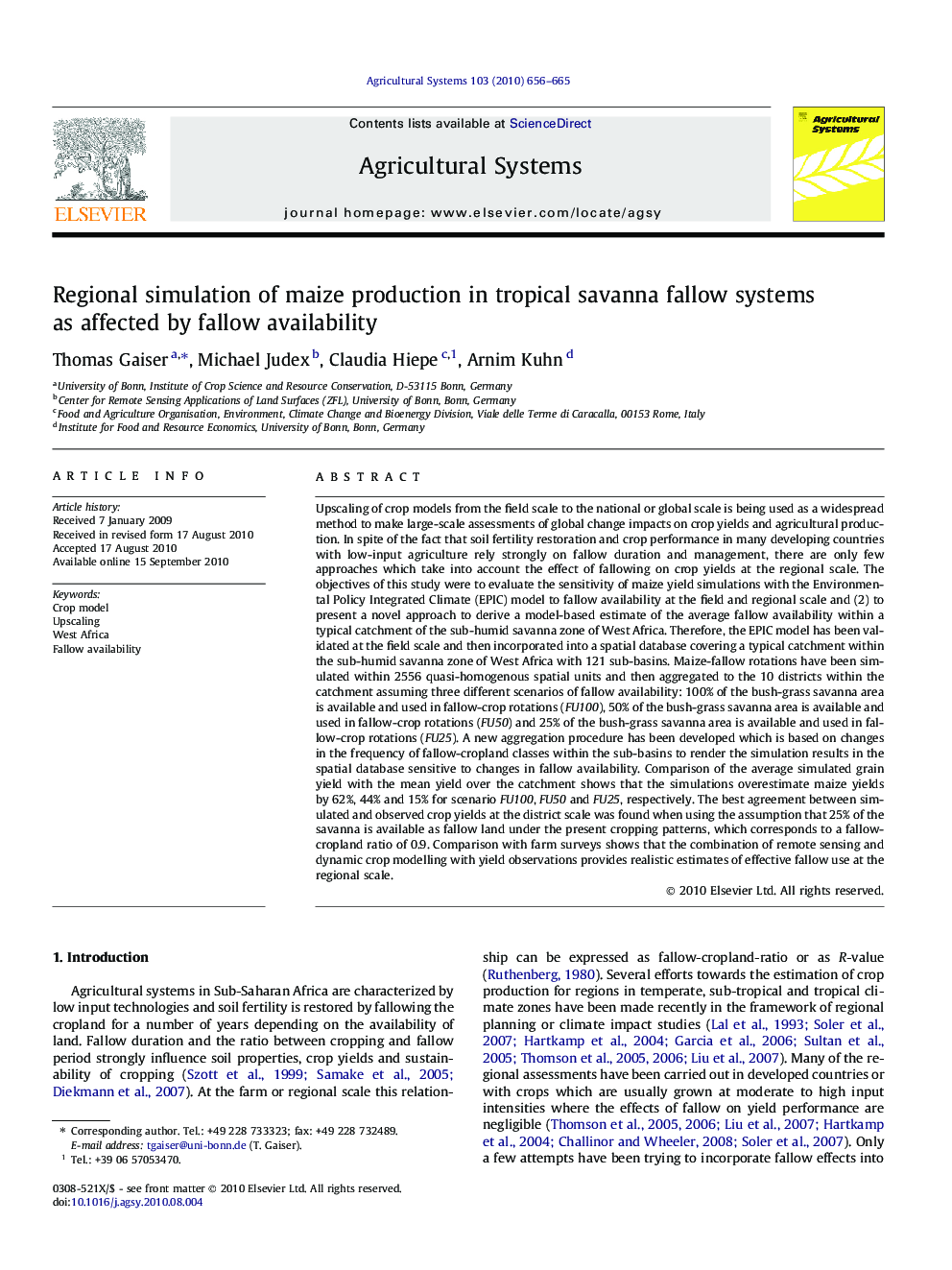| کد مقاله | کد نشریه | سال انتشار | مقاله انگلیسی | نسخه تمام متن |
|---|---|---|---|---|
| 4491536 | 1317860 | 2010 | 10 صفحه PDF | دانلود رایگان |

Upscaling of crop models from the field scale to the national or global scale is being used as a widespread method to make large-scale assessments of global change impacts on crop yields and agricultural production. In spite of the fact that soil fertility restoration and crop performance in many developing countries with low-input agriculture rely strongly on fallow duration and management, there are only few approaches which take into account the effect of fallowing on crop yields at the regional scale. The objectives of this study were to evaluate the sensitivity of maize yield simulations with the Environmental Policy Integrated Climate (EPIC) model to fallow availability at the field and regional scale and (2) to present a novel approach to derive a model-based estimate of the average fallow availability within a typical catchment of the sub-humid savanna zone of West Africa. Therefore, the EPIC model has been validated at the field scale and then incorporated into a spatial database covering a typical catchment within the sub-humid savanna zone of West Africa with 121 sub-basins. Maize-fallow rotations have been simulated within 2556 quasi-homogenous spatial units and then aggregated to the 10 districts within the catchment assuming three different scenarios of fallow availability: 100% of the bush-grass savanna area is available and used in fallow-crop rotations (FU100), 50% of the bush-grass savanna area is available and used in fallow-crop rotations (FU50) and 25% of the bush-grass savanna area is available and used in fallow-crop rotations (FU25). A new aggregation procedure has been developed which is based on changes in the frequency of fallow-cropland classes within the sub-basins to render the simulation results in the spatial database sensitive to changes in fallow availability. Comparison of the average simulated grain yield with the mean yield over the catchment shows that the simulations overestimate maize yields by 62%, 44% and 15% for scenario FU100, FU50 and FU25, respectively. The best agreement between simulated and observed crop yields at the district scale was found when using the assumption that 25% of the savanna is available as fallow land under the present cropping patterns, which corresponds to a fallow-cropland ratio of 0.9. Comparison with farm surveys shows that the combination of remote sensing and dynamic crop modelling with yield observations provides realistic estimates of effective fallow use at the regional scale.
Research highlights
► EPIC combined with a spatial database model is sensitive to fallow availability.
► Spatially explicit estimation of the effective use of fallow.
► Combination of model runs with remote sensing information and yield statistics.
Journal: Agricultural Systems - Volume 103, Issue 9, November 2010, Pages 656–665